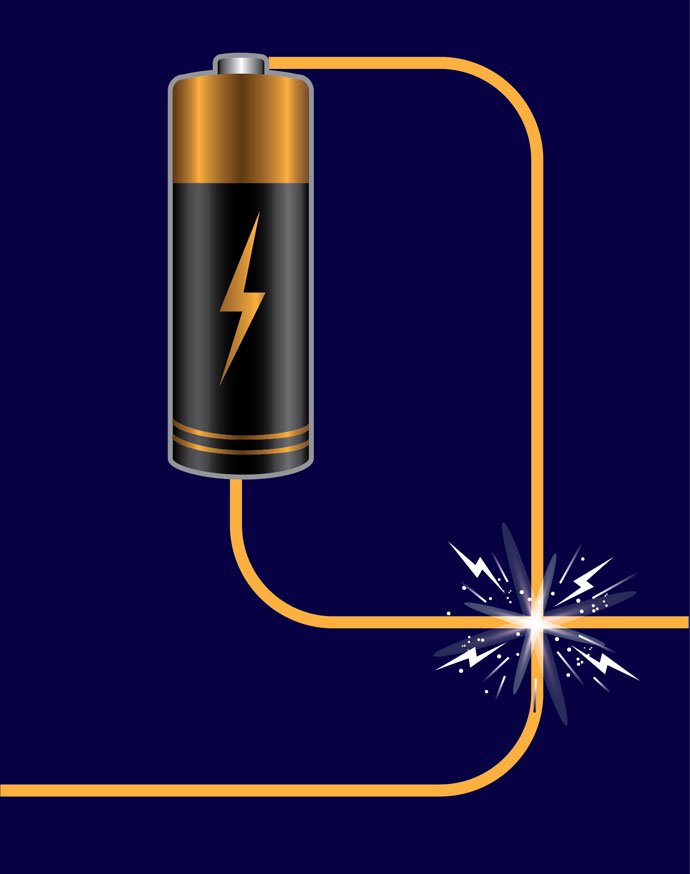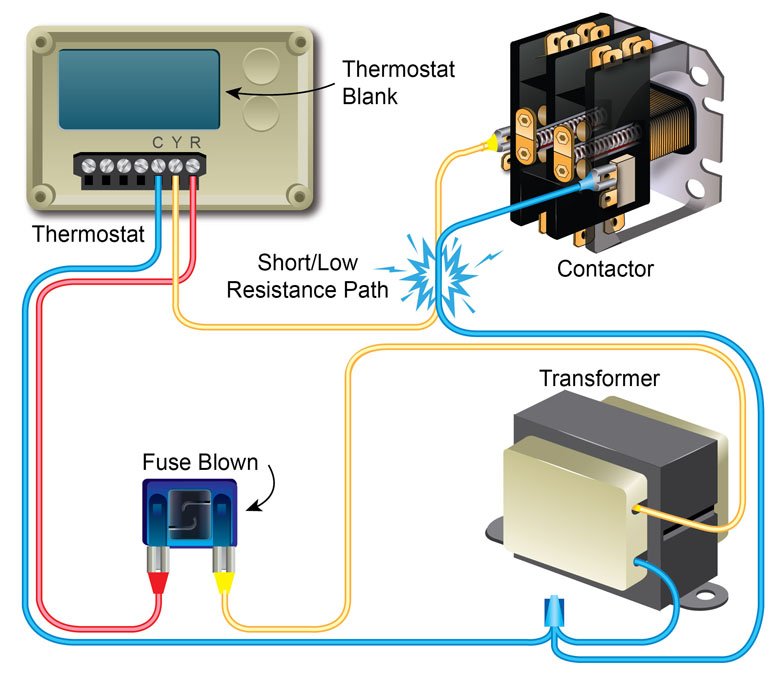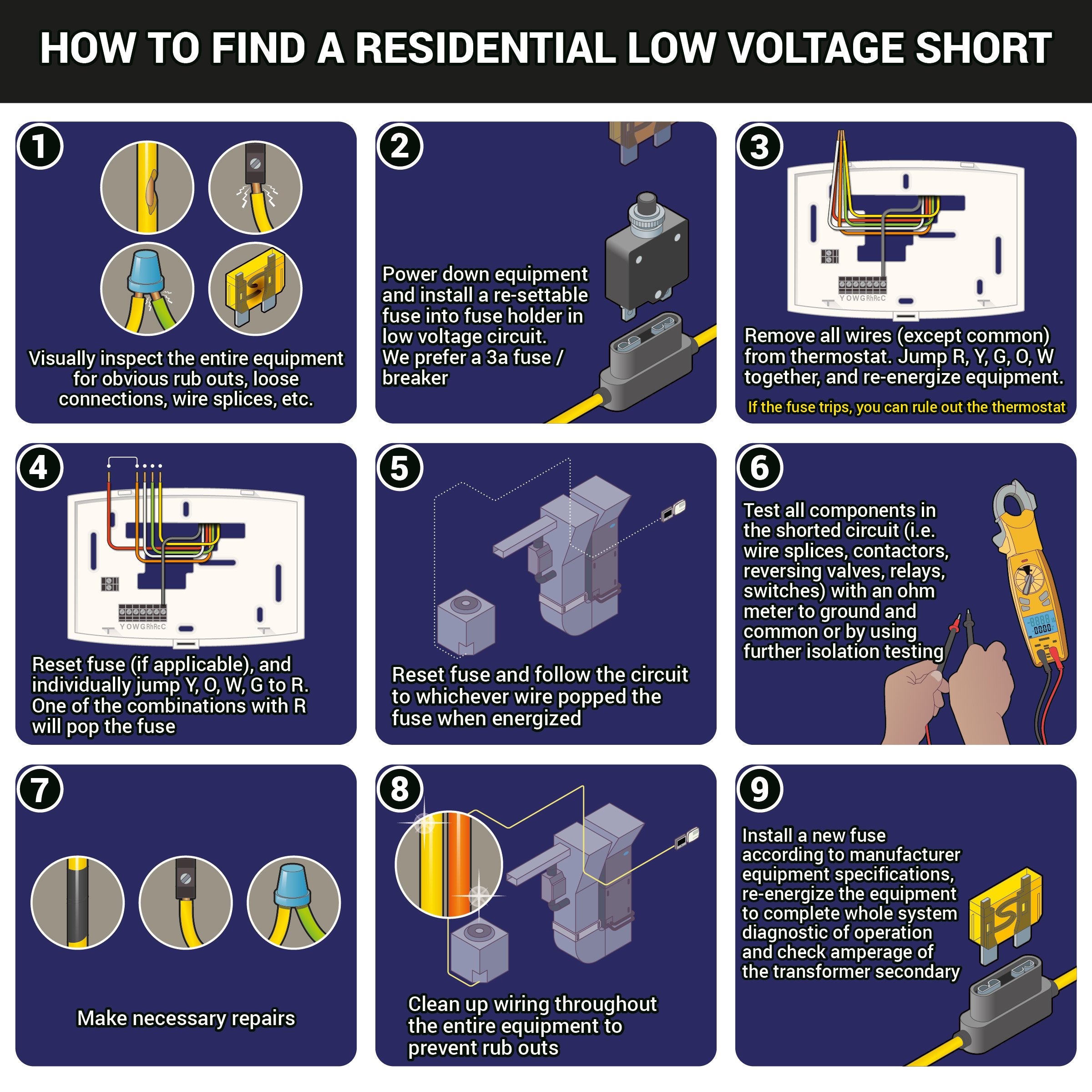Get Tech Tips
Subscribe to free tech tips.
Short Circuits

The term “short” has become a meaningless phrase in common culture to mean “anything wrong with an electrical device.”
In reality, a short circuit is a particular fault that can mean one of two things in technical lingo:
1. Any two circuits that are connecting in an undesigned manner.
This issue would be the case if a control wire had two conductors connected due to abrasion, like a Y and G circuit “shorted” in a thermostat wire between the furnace and the thermostat. This case would result in the condenser running whenever the blower is energized. Whether this is even a “real” short or not is disputed, but we commonly refer to it that way in the trade.

2. A no-load path between two points of differing charges.
This case would be a traditional “short to ground” low voltage, hot to common connection, or a connection between legs of power without first going through a load of appropriate resistance.
Both of these conditions will result in something occurring that should not be occurring. Either something is being energized when it shouldn't be, or fuses and breakers trip or blow, resulting in damaged components.
This is different from an open circuit, which is when there is no path at all. So, if a load has power applied and NOTHING is happening, it is open. If power is applied and breakers or fuses trip or blow or something comes on at the wrong time or order, that is a short.
You can find low-voltage shorts with a resettable fuse as shown below:

Many techs advocate using an ohmmeter to find a short circuit. We like that method, but we often find that using the 24v as is and simply using a process of elimination to find the cause is easier for most techs, as shown above.
—Bryan
P.S. — I said that short circuits may be mistaken for open circuits. Here is a video showing the process of diagnosing an open circuit AND using an ohmmeter to locate a short circuit: https://hvacrschool.com/videos/diagnosing-open-short-circuits/










Comments
To leave a comment, you need to log in.
Log In